Photographs by John Salmon. Captions and discussion by Jacqueline Banerjee. You may use the images without prior permission for any scholarly or educational purpose as long as you (1) credit John Salmon and (2) link your document to this URL in a web document or cite the Victorian Web in a print one. Click on the images to enlarge them.


The Crucifixion and the Ascension, from the sanctuary at the Romanesque St Michael and All Angels, Ladbroke Grove, Kensington, either side of the baroque reredos. These are likely to have been installed when the church was first built: the Crucifixion window was erected to the memory of the dramatist Thomas William Robertson (described as a "dramatic author" in the inscription) who died aged only 42 on 3 February 1871. The church was consecrated on 17 May 1871 (see last picture here).
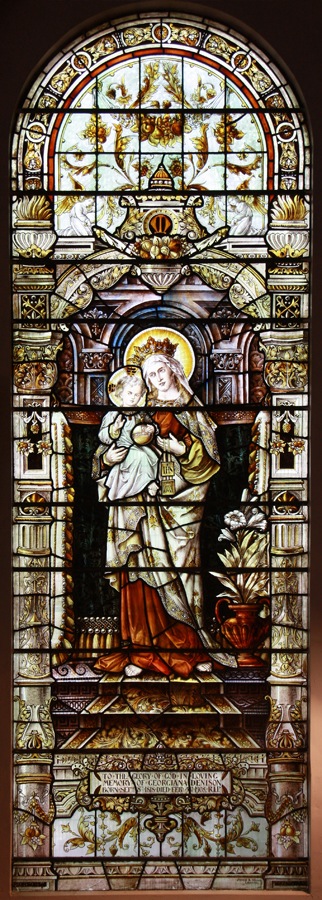
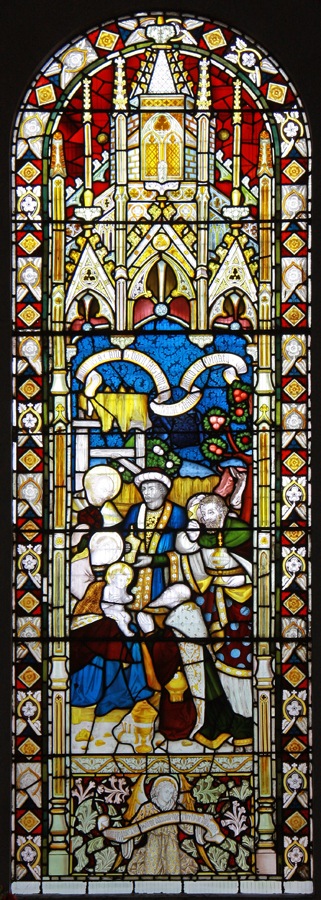

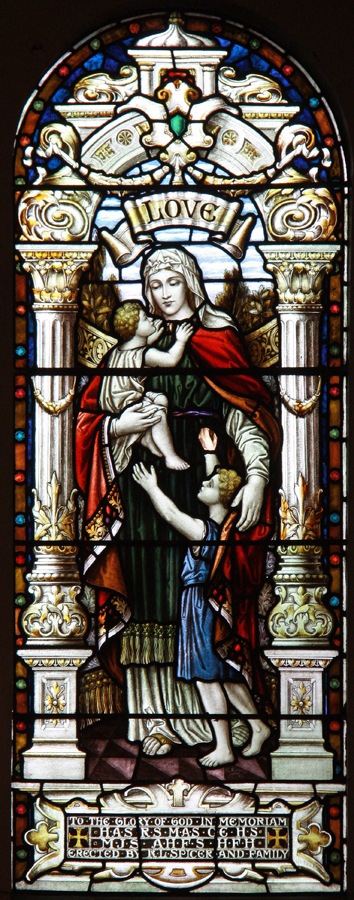
Left to right: (a) The Virgin Mary and her infant Jesus, signed by Jones & Willis, London (see discussion below). This in memory of Georgiana Denison, who died early in 1908, so it belongs to a later period. (b) The Magi offering gifts on the stable, with a cow in the background to the right. (c) Jesus preaching with two of his disciples listening attentively, a window in memory of Sage Anne Caborne who died on 28 March 1890. (d) A window depicting "Love" in memory of various members of the Spicer family.

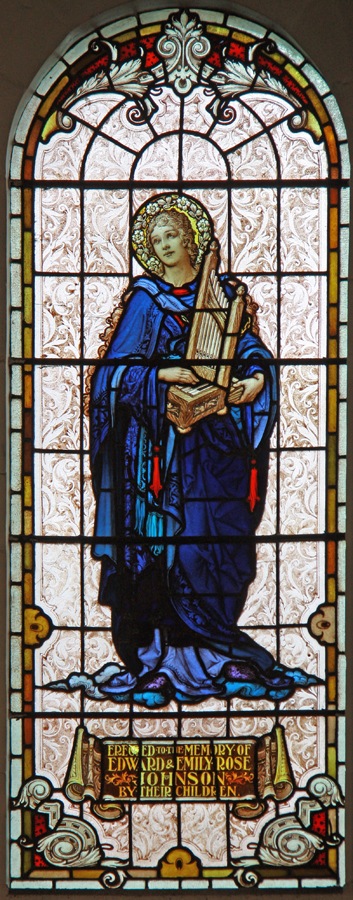
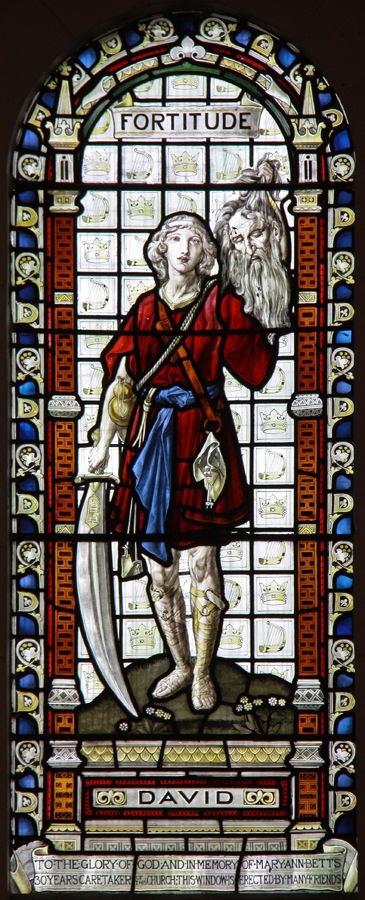
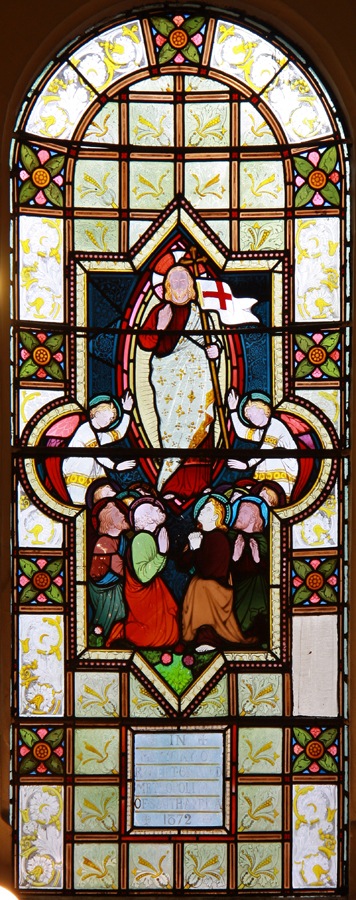
(a) A crucifixion scene. (b) St Cecilia, in memory of Edward and Emily Rose Johnson, by their children. (c) A dramatic window showing David holding the head of the slain Goliath, and a very large blade as well as his sling, under the banner of fortitude. This window is in memory of Mary Ann Betts, "for 30 years caretaker of this church." This is possibly the Mary Ann Betts who died in Kensington in 1901, aged 61. (d) An early window showing the Ascension, which is dedicated to the memory of the Rev. Robert Gray, first "Bishop of Cape Town and Metropolitan," who died in Cape Town on 1 September 1872, much weakened after having being thrown from his horse while engaged in his duties.

These are lovely windows. The two sanctuary windows seem to be by the same hand, as perhaps (a big perhaps) do the two windows showing saints. But the designers are not known. As for the one signed in the lower right-hand corner by Jones & Willis, this firm was originally a large Birmingham church-furnishing supplier which was founded in about 1847, and opened branches in Liverpool and London. It entered the stained-glass business from about the 80s, and has been described as one of the "Gothic Revival traditionalists" (Baker 42). Later on, in the 1920s and 30s, the firm had a well-known designer in the architect F. E. Howard, who was a pupil of Ninian Comper, but the window in memory of Georgiana Denison would have been installed before that. So here too the designer is not known.
Several of the windows are, in fact, more suitable for a Gothic context. The ones that really suit the church are the first pair, and the outer ones in the last row, with their floral motifs. The very last one, of 1872, with its unusual geometric pattern and attractive flora in the quarries, seems especially appropriate. It might, however, have been specially designed to reflect Bishop Gray's work in Africa, rather than to harmonise with the church itself.
Related Material
- St Michael and All Angels, Ladbroke Grove, Kensington: Part I
- St Michael and All Angels, Ladbroke Grove, Kensington: Part II
Sources
Baker, Lesley. "'What's in a Name?' Morris & Co.'s Stained Glass in Australia." William Morris Society. Web. 14 September 2015.
FreeBMD. Web. 14 September 2015.
"Jones & Willis, Ltd." Gwydir Lliw Nghymru: Stained Glass in Wales. Web. 14 September 2015.
Gray, Charles, ed. Life of Robert Gray: Bishop of Cape Town and Metropolitan of Africa. Vol. II. London: Rivingtons, 1876. Span class="website">Internet Archive. Contributed by the University of California Libraries. Web. 14 September 2015.
Created 13 September 2015